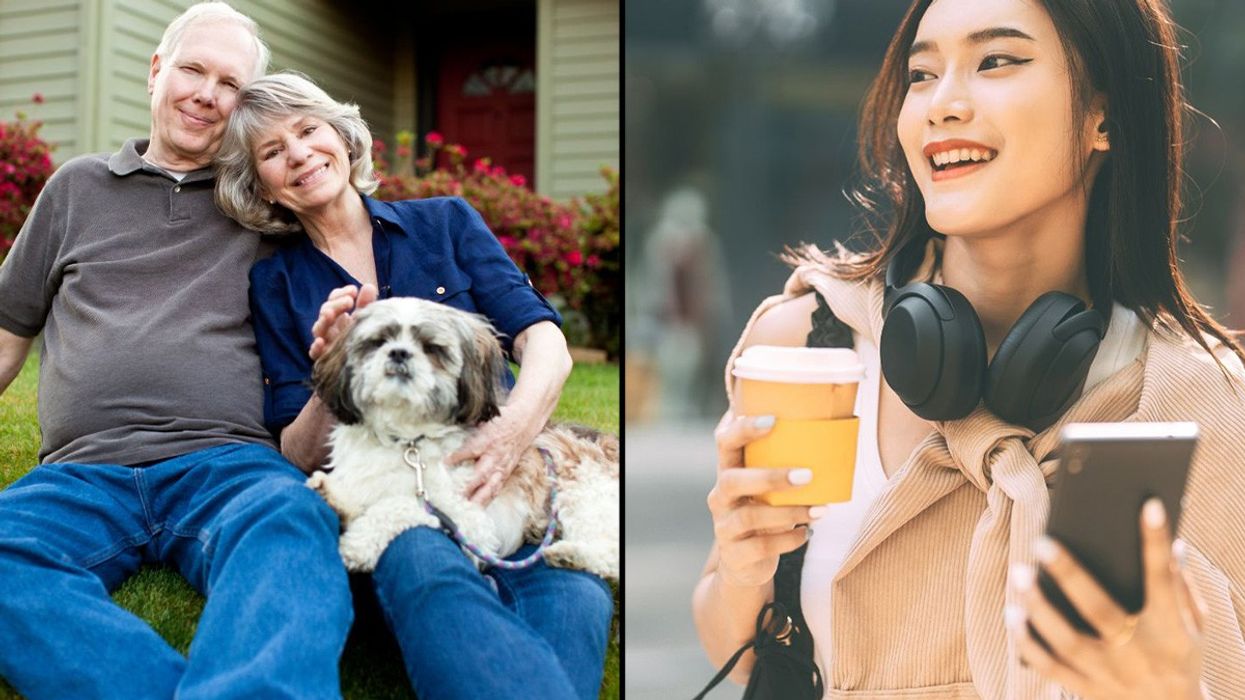In 2005, 16-year-old Megan King went to gym class like any normal teenager. However, after diving for a soccer ball and getting hurt in a fall, her life changed forever. While an injury sustained playing soccer is common for people her age, she injured her ankle and tore muscles across her shoulder blades according to The Daily Mail. While healing takes time, doctors were wondering why she was still on crutches after over a year.
King’s health was deteriorating, with muscles tearing and joints weakening, including her spine. After ten years and over 20 surgeries, she was officially diagnosed with hypermobile Ehler's-Danlos syndrome (hEDS), a genetic disorder that weakens connective tissues between the joints. That would explain why in 2016, when a doctor tried to remove the protective Halo brace from her head, her skull nearly fully detached from her body internally. In other words, her head was nearly decapitated from the inside.
“I flew my chair back to keep gravity from decapitating me. My neurosurgeon had to hold my skull in place with his hands. I couldn't stand. My right side was shaking uncontrollably,” she told reporters.
She had emergency surgery to fuse her skull back to her spine. She woke up unable to move her head. In 2025, after additional years of physical therapy, medical care, and her 37th surgery, King is now fully able to stop worrying about spinal connection issues. She can live freely now. Well, mostly freely.
“I’m literally a human statue,” she said. “My spine doesn’t move at all. But that doesn’t mean I’ve stopped living.”
In order to keep her body stable, surgeons had to permanently fuse King’s entire spine, from the base of her skull down to her pelvis. Now age 35, she can no longer bend, twist, or slouch with her fused spine. She cannot even move her head in any direction, just face forward. But that’s not stopping her from enjoying and experiencing life, such as going bowling with her friends.
“I bowled a strike—on my very first try. My friends screamed and clapped and cheered like wild. They weren’t just celebrating the strike. They were celebrating everything I’ve survived,” King recalled. “I’m still learning what my new body can do. It’s not easy, but I’m adapting. And I’m always surprised by what I can still accomplish.”
One can admire King’s determination to not let her medical issues get in the way of trying to live her life to the fullest. It’s not easy. There are studies that link lack of mobility to an increase of clinical depression. King didn’t just have to battle her body to live, but survive a mental battle as well. With her Ehler's-Danlos syndrome, she had to adapt to a new kind of living, but it was still living.
@skyrhimusic Slowly coming back to life yall. Heres some shit that i had to figure out for myself that really helps my #ehlersdanlossyndrome #hypermobility #hypermobileehlersdanlossyndrome #ehlersdanlossyndromecheck #elhersdanloswarrior
Being open to adapting to her new reality, seeking aid when needed, and exercising to achieve more independence couldn’t have been easy, but it’s what helped King reach a point where she can find joy in her life. That, along with the support of her friends, family, and physicians, has brought her to this point, and it’s how a person can live a fuller life despite significant limitations. As time passes, more innovations in the healthcare industry are being developed to help individuals regain mobility, such as exoskeletons designed to strengthen knee joints and hips.
It took a lot of time and work for Megan King to bowl again. But while she had more gutter balls than most people have in their lives, that didn’t stop her from knowing she had more frames to roll.



















 Ladder leads out of darkness.Photo credit
Ladder leads out of darkness.Photo credit  Woman's reflection in shadow.Photo credit
Woman's reflection in shadow.Photo credit  Young woman frazzled.Photo credit
Young woman frazzled.Photo credit 




Will your current friends still be with you after seven years?
Professor shares how many years a friendship must last before it'll become lifelong
Think of your best friend. How long have you known them? Growing up, children make friends and say they’ll be best friends forever. That’s where “BFF” came from, for crying out loud. But is the concept of the lifelong friend real? If so, how many years of friendship will have to bloom before a friendship goes the distance? Well, a Dutch study may have the answer to that last question.
Sociologist Gerald Mollenhorst and his team in the Netherlands did extensive research on friendships and made some interesting findings in his surveys and studies. Mollenhorst found that over half of your friendships will “shed” within seven years. However, the relationships that go past the seven-year mark tend to last. This led to the prevailing theory that most friendships lasting more than seven years would endure throughout a person’s lifetime.
In Mollenhorst’s findings, lifelong friendships seem to come down to one thing: reciprocal effort. The primary reason so many friendships form and fade within seven-year cycles has much to do with a person’s ages and life stages. A lot of people lose touch with elementary and high school friends because so many leave home to attend college. Work friends change when someone gets promoted or finds a better job in a different state. Some friends get married and have children, reducing one-on-one time together, and thus a friendship fades. It’s easy to lose friends, but naturally harder to keep them when you’re no longer in proximity.
Some people on Reddit even wonder if lifelong friendships are actually real or just a romanticized thought nowadays. However, older commenters showed that lifelong friendship is still possible:
“I met my friend on the first day of kindergarten. Maybe not the very first day, but within the first week. We were texting each other stupid memes just yesterday. This year we’ll both celebrate our 58th birthdays.”
“My oldest friend and I met when she was just 5 and I was 9. Next-door neighbors. We're now both over 60 and still talk weekly and visit at least twice a year.”
“I’m 55. I’ve just spent a weekend with friends I met 24 and 32 years ago respectively. I’m also still in touch with my penpal in the States. I was 15 when we started writing to each other.”
“My friends (3 of them) go back to my college days in my 20’s that I still talk to a minimum of once a week. I'm in my early 60s now.”
“We ebb and flow. Sometimes many years will pass as we go through different things and phases. Nobody gets buttsore if we aren’t in touch all the time. In our 50s we don’t try and argue or be petty like we did before. But I love them. I don’t need a weekly lunch to know that. I could make a call right now if I needed something. Same with them.”
Maintaining a friendship for life is never guaranteed, but there are ways, psychotherapists say, that can make a friendship last. It’s not easy, but for a friendship to last, both participants need to make room for patience and place greater weight on their similarities than on the differences that may develop over time. Along with that, it’s helpful to be tolerant of large distances and gaps of time between visits, too. It’s not easy, and it requires both people involved to be equally invested to keep the friendship alive and from becoming stagnant.
As tough as it sounds, it is still possible. You may be a fortunate person who can name several friends you’ve kept for over seven years or over seventy years. But if you’re not, every new friendship you make has the same chance and potential of being lifelong.